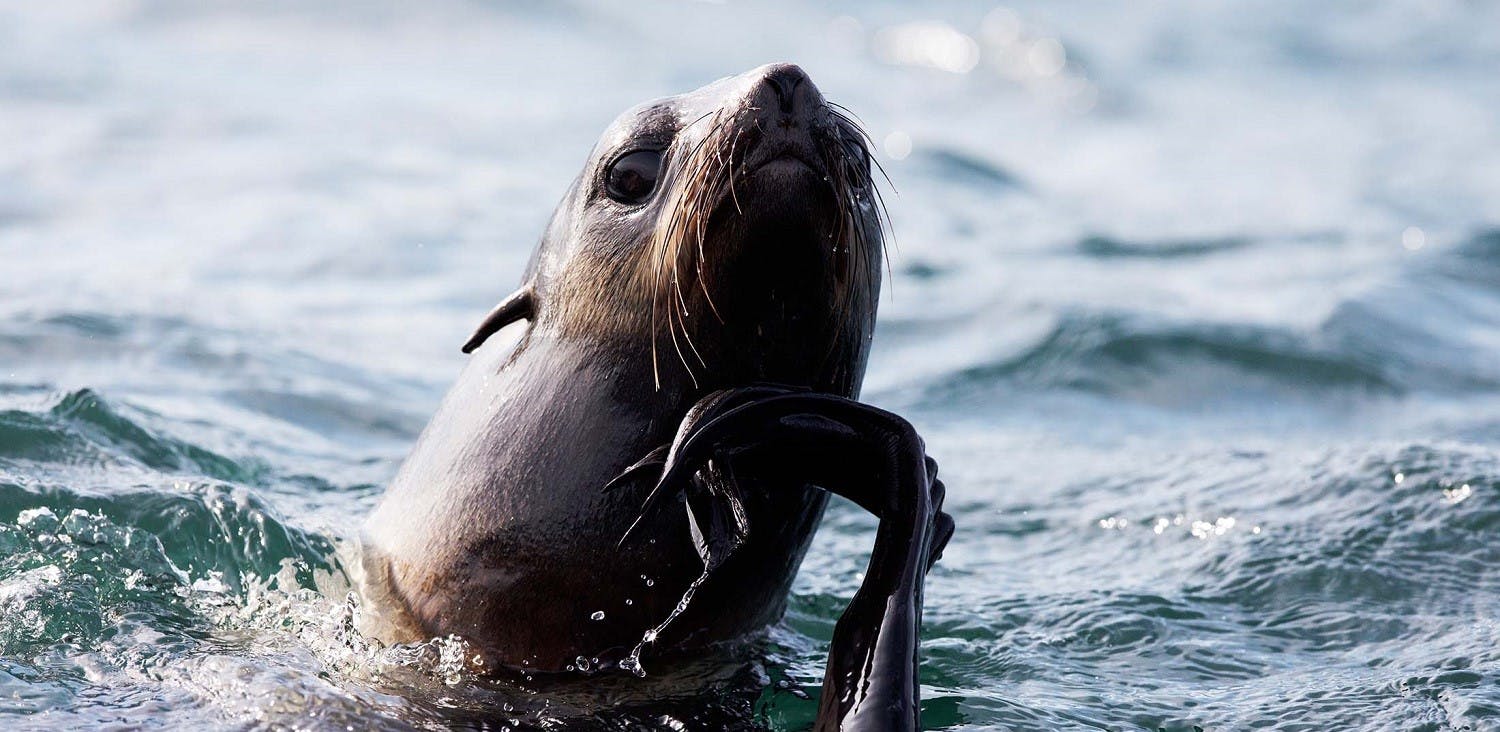Tyuleniy Island: A Northern Fur Seal Mecca in the Russian Far East
An isolated piece of land carved by the elements, Tyuleniy Island cuts a lonesome figure in the Sea of Okhotsk in the Russian Far East. It may be entirely uninhabited by humans—with the sole exception of a seasonal scientific research base—but it’s home to a unique marine mammal: the northern fur seal.

Tyuleniy, which means seal in Russian, lives up to its namesake as one of only a handful of northern fur seal breeding grounds in the world. According to the latest data, as many as 115,000 seals call it home during peak mating season in the summer months, meaning cruises to Tyuleniy Island offer travelers the chance to witness vast colonies of these beautiful mammals in their natural habitat. “The island represents the perfect match of good climatic conditions, availability of food sources and lack of predators—except for killer whales. It’s a unique place for them,” says Vladimir Burkanov, a northern fur seal expert from the National Oceanic and Atmospheric Administration who has studied the Russian island’s population.

Independent by nature, the northern fur seal spends half the year at sea, living alone or in pairs. They are avid hunters and dive deep for their meals; fur seals’ diets comprise everything from squid to salmon and mackerel. They have longer flippers than of any of the other 15 fur seal species. Their front flippers are strong, allowing them to run and climb nearly vertical cliffs, while their hind flippers make up a quarter of their body size. Their fins cut through the water smoothly to help them avoid their key predators—orcas.
Their lives at sea remain a mystery, even to scientists. “Since they spend most of their time in the water, we don’t know precisely their behavior out in the open seas,” explains David Rosen, a marine mammal researcher at the University of British Columbia in Vancouver, Canada. “We do know that we never see groups of them. We believe that they are pretty independent animals.”

While they don’t often appear on land, it can get crowded when they do. Mating season, which begins in May, is a critical time for northern fur seals in the Russian Far East. Males arrive first to gain control over a vast territory that can hold many females—they use their girth to establish their dominance. While females weigh between 35 and 45 kilograms (77 to 99 pounds), males can reach up to 300 kilograms (661 pounds).

“This island hosts a very important, incredibly dense population of these seals, which can create very tense situations during the breeding season due to the fierce competition between males for a share of the territory,” explains Burkanov. “It becomes a spectacular show throughout the breeding season.”
According to both scientists, males don’t eat during the four-month-long breeding season to ensure other males doesn’t steal their harem while their attention is elsewhere. Space is so cramped that many males won’t be able to breed, edging their DNA out of the next generation’s genetic code.

At the end of the breeding season, the northern fur seal pups are left to fend for themselves at only four months old. Without much experience of swimming or catching prey, the youngsters are forced to learn how to navigate life on the high seas quickly. Since Tyuleniy Island has an ample food supply and few predators, it is an ideal place to learn these necessary survival skills.
“Most large mammals, especially polar species, require lots of parental dedication while growing up to survive in this environment,” says Rosen. “Fur seals are left alone almost as soon as they are born.” Once these newly born seals take to the open sea, they may not return to their island until two years later. It’s not only the species’ breeding patterns that differentiate the northern fur seals from their pinniped cousins. Long hunted for their prized pelts, this seal species relies on fur to stay warm instead of the blubber stores used by other marine mammals, such as whales, sea lions and other seals.

“Fur seals have very little fat on their bodies, relying completely on their very dense fur. The fur of these seals is probably the second most dense of the animal world, after the sea otter,” adds Rosen. “And as it happened to the sea otters, the fur seals were also largely hunted for their precious furs, being almost driven to extinction.”
The northern fur seals on Tyuleniy Island are fascinating for the scientific community. Researchers are monitoring them to learn more about the species and preserve the population. Northern fur seals are facing pressure from environmental challenges such as climate change, which is shifting the ranges of some of their key prey. According to the International Union for Conservation of Nature, the species is listed as vulnerable on their endangered species list.

Northern fur seals are, however, more adaptable than other seal species and are facing less external pressures, especially in isolated areas like the Sea of Okhotsk. “These animals are known as very adaptable to new situations. This, together with the large diversity of food sources they are able to use, could allow them to be less disturbed and impacted than other animals,” explains Rosen. Given its remote location and untouched nature, Tyuleniy Island is likely to remain one of the few places in the world where northern fur seals can fully thrive.

